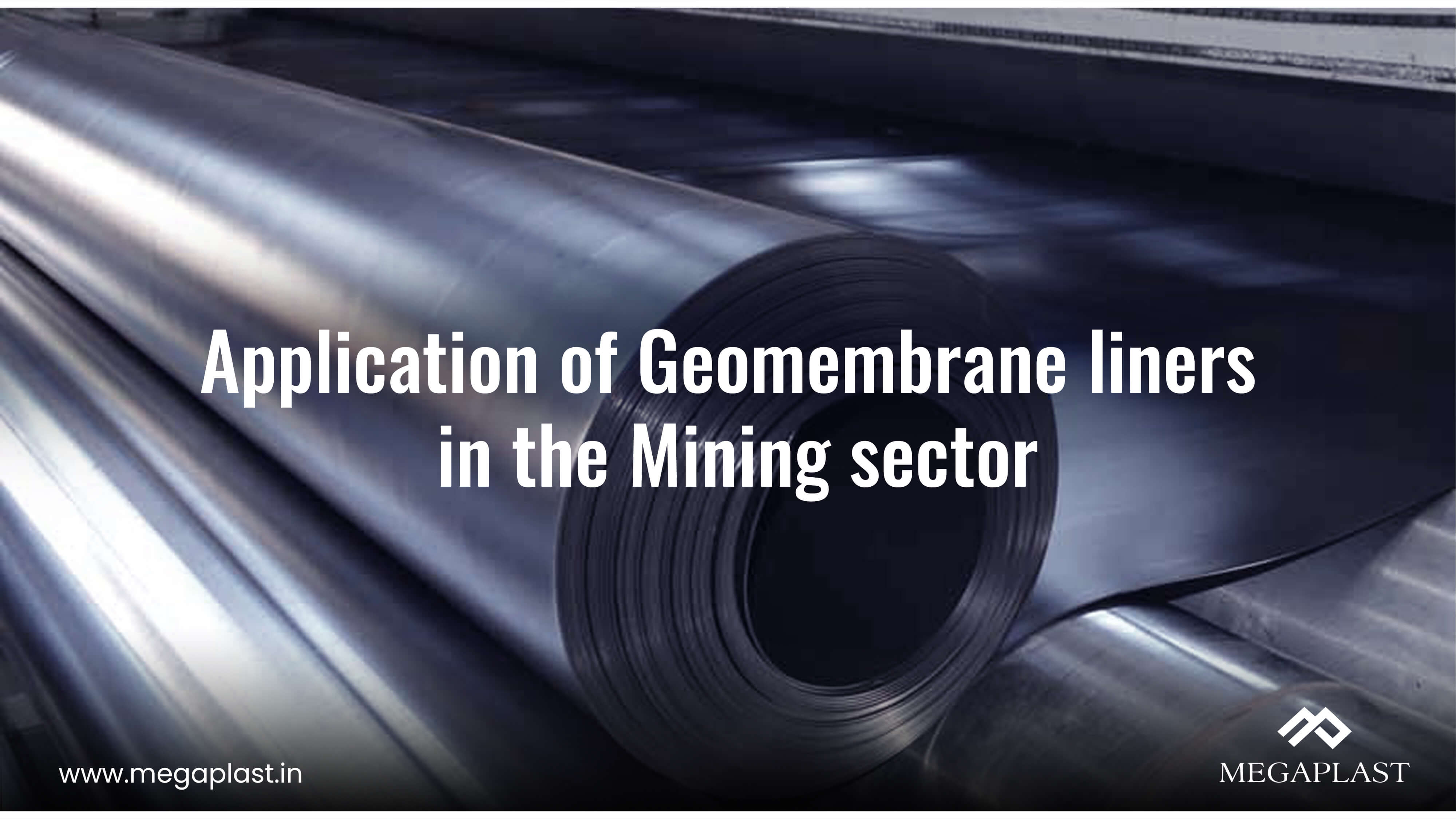
Mining operations have an increasing need for geosynthetics given their highly radioactive nature. With essential minerals like Coal or Lithium essentially found in batteries which govern our electrically functioning world, their mining procedures are both perilous and complex, thus calling for the need for Geomembranes whose properties exude extreme strength, UV Stability, along with excellent chemical resistance. Geomembranes help in the separation, barriers and drainage of substances on the surface of the land.
At Megaplast, Geomembrane liners of various calibres are consistently produced with up to 8-metres wide and more than six finish options, MegaLinersTM are found in four primary application types defined by their density, finishes and designs, namely, HDPE Smooth, HDPE Textured, LLDPE Smooth and LLDPE Textured.
Let’s consider the use of each bespoke Geomembrane type and its integral utility in the mining industry.
A vital process involved in deriving chemicals and minerals through mining is the process of ‘heap-leaching’. Heap leaching is the stacking of metal-laden ore on an impermeable pad and irrigating the ore for a considerable period of time with the presence of chemical solutions that dissolve the required metals. The dissolved metal then percolates from the base of the heap and is collected by an HDPE Geomembrane that helps resist chemical attack, and leakage of the leachants and protects the surrounding area from being exposed to hazardous components.
The desired metal is then channeled through pipes into a pond that has been lined with double-layered geomembranes. It is in these processes where Megaplast HDPE Smooth and LLDPE Smooth liners come into play.
HDPE and LLDPE Geomembranes as Leach Pads: The basic engineering of a Leach Pad is to create a reliable and resistant barrier between chemical elements and the soil layer of the given land. This polyethylene-made liner is placed at the bottom and on the sides of the area where the metal ore is placed and works towards protecting the surrounding soil from the hazardous effusion of chemical substances and for the preservation of groundwater.
The most durable and conventional thickness of the geomembranes used as leach pads ranges from 60 to 80 mils. HDPE and LLDPE geomembrane must be impermeable with regards to the chemical solution used in the heap leaching processes, where the chemicals are an amalgamation of water, diluted sodium cyanide/ sulfuric acid and many other solutions.
Megaplast Conductive Geomembranes used for heavy-chemical containment: Conductive geosynthetic liners of both HDPE and LLDPE series are treated with a coextruded electrically conductive layer. This feature contributes immensely to the post-installation surface inspection procedure where the whole area installed with a geomembrane is spark tested for leak location and repair. These high-calibre geomembranes are necessary for electrically loaded procedures that help ensure safe and durable protection of the surrounding soil layers.
One can find these available in multiple colours, where the outer surface liner is tainted with dyes containing expensive antioxidants and stabilizers. Radioactive substances in a mining pad are thus restricted and concealed with absolute precision.
Geomembranes are used as covers for expired mines: often, after the completion of a mine’s lifecycle, it is important to seal the exposed surface of the mining area. HDPE MegaLinersTM are best used for covering the mine to prevent the waste, concentrated chemical residue and the surrounding soil from spreading to other locations. Geomembrane helps safeguard and secure the environment and preserve natural resources from any hazardous harm.
Are you seeking HDPE geomembranes in India for international use, or for customised liners for your unique needs? Send us your requirements at info@mega-group.in or contact us at +91 022 - 6106 6000.
For more information. Please complete this form.